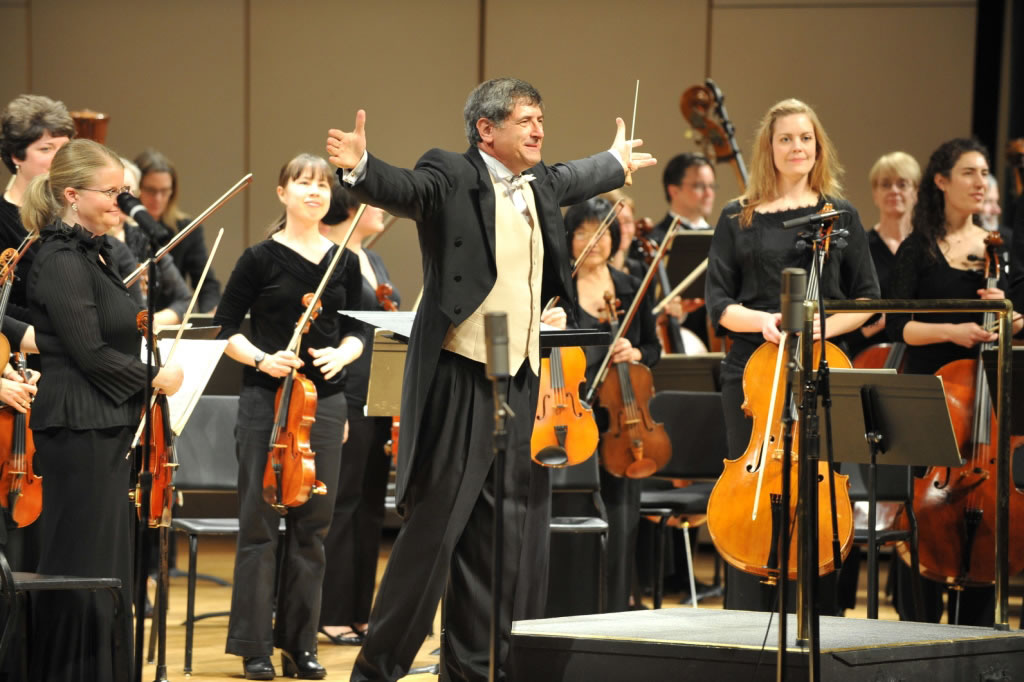What: The Vancouver Symphony Orchestra and OMSI present Gustav Holst’s “The Planets” through music, video and scientific discussion.
Where: Skyview Concert Hall, 1300 N.W. 139th St.
When: 3 p.m., Saturday, May 26 and 7 p.m., Sunday, May 27.
Cost: Tickets range from $10 to $48 and can be purchased online at http://bit.ly/L7xMZk.
Info: Visit Vancouver Symphony Orchestra or call (360) 735-7278.
There were no stunning images of Mars, Jupiter or Saturn back in 1916 when English composer Gustav Holst finished his seven-part suite called “The Planets.”
What: The Vancouver Symphony Orchestra and OMSI present Gustav Holst's "The Planets" through music, video and scientific discussion.
Where: Skyview Concert Hall, 1300 N.W. 139th St.
When: 3 p.m., Saturday, May 26 and 7 p.m., Sunday, May 27.
Cost: Tickets range from $10 to $48 and can be purchased online at <a href="http://bit.ly/L7xMZk.">http://bit.ly/L7xMZk.</a>
Info: Visit Vancouver Symphony Orchestra or call (360) 735-7278.
NASA was still about 40 years away. Heck, there wasn’t even a Pluto — or at least it hadn’t been discovered yet.
But something about the way Holst’s music emotionally describes seven of our solar system’s planets has endured and remained relevant.
“I wonder what Holst would think if he were alive now,” said Jim Todd, planetarium manager at the Oregon Museum of Science and Industry. “Back when he was around, they didn’t have any (space) probes or anything like that. It was pure observation (through telescopes) at the time. Planets were just these tiny little specks.”
The Vancouver Symphony Orchestra and OMSI will take a deeper look at Holst’s most famous work this weekend, in two season-finale concerts that will be both musical and educational.
OMSI will supply images and Todd will discuss the scientific aspects of each planet to introduce the seven movements of the piece, which are: Mars, the Bringer of War; Venus, the Bringer of Peace; Mercury, the Winged Messenger; Jupiter, the Bringer of Jollity; Saturn, the Bringer of Old Age; Uranus, the Magician; and Neptune, the Mystic.
“This won’t just show the planets, but will look at explorations of them as well,” Todd said.
Along with the discussion, the presentation will include a three-dimensional video created by Video Ideas Productions that was made to go with the music.
“It’s not static, and it has a lot of motion to it — it has a 3-D feel to it, but it’s not something you’d need glasses for or anything,” Todd added.
Igor Shakhman, the orchestra manager, said he’s impressed by how well the music, video and scientific presentations fit together.
“It’s an excellent piece of music, but the 3-D interactive images enhance it a lot,” Shakhman said. “The music by itself is incredible. It’s very recognizable. It’s almost like movie music. And with OMSI, I know it will enhance the entire experience.”
When Holst wrote the piece he had astrology, rather than astronomy, in his mind. But Todd said he thinks the composer would probably appreciate the science more if he were around today.
“You have to think back in time what they knew about the planets,” Todd said. “They didn’t know much. Pluto wasn’t even there. It wasn’t discovered until 1932.”
Of course, Pluto lost its status as a planet in 2006, when it was demoted to a “dwarf planet” by the scientific community, but Todd said he thinks Holst might have dedicated a movement to it anyway.
“You wonder, how would he write music for Pluto?” Todd said. “It’s a tiny, distant, dark place. Maybe he’d use the piccolo. It would be somber, so far, so dark, so cold.”
His favorite movement in the work is Jupiter, the Bringer of Jollity, which musically has a very uplifting feel, Todd said.
“I like that because it’s lively,” he said. “Jupiter is the largest planet in the solar system, but it has all of these moons, so it’s kind of like a juggling act. The music is bouncy, almost, it fits nicely.”
That piece is very different than Mars, the Bringer of War, which has more of a martial, military feel to it.
“This is just a great way to expose the public to science and also to this great piece of music,” Todd said.
Salvador Brotons will conduct, and VSO will use two harps and an expanded percussion section in the performance, along with several other auxiliary instruments, Shakhman added.
“It will make for a magnificent season finale,” Shakhman said.
Sue Vorenberg: 360-735-4457; sue.vorenberg@columbian.com; http://www.twitter.com/col_suevo.



